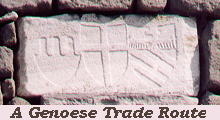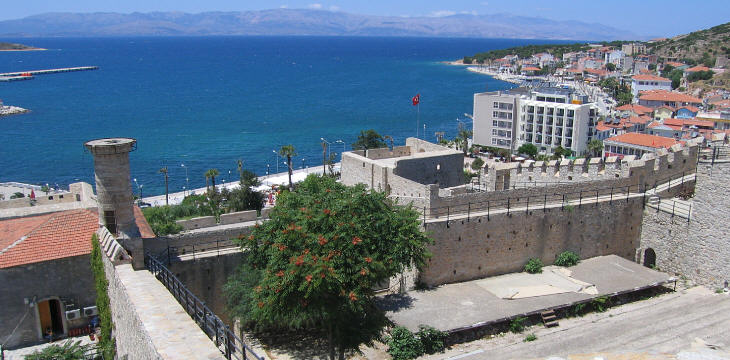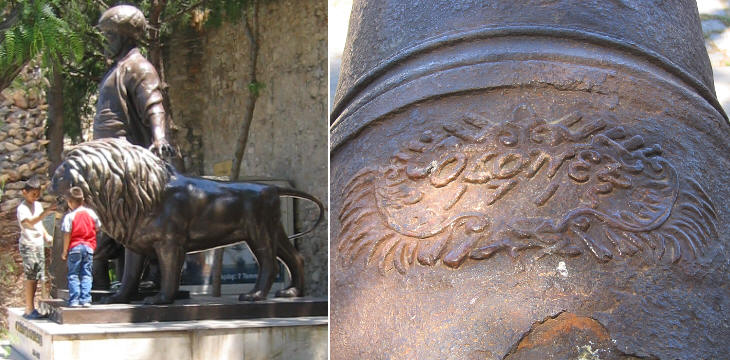  What's New! Detailed Sitemap All images © by Roberto Piperno, owner of the domain. Write to romapip@quipo.it. Text edited by Rosamie Moore. Page added in June 2005. |
  Cismes (Cesme) Cismes (Cesme)(an inscription making reference to Maona Giustiniani) The island of Scio, and in particular its main town was located across from mainland Asia. The Genoese placed a small garrison on a bay of the mainland, which otherwise could have been used as a base by enemies to attack Scio. The garrison was housed in a tower.
The Ottomans (who acquired Cesme in the XVth century) saw that the bay had the potential for becoming an important base for their navy, both from a military and a trade point of view. Sultan Bayezit II (1481-1512) built a large fortress to protect the harbour and the original Genoese tower became part of it: at that time the threat came from the Knights of Rhodes, who often raided the coasts of Anatolia.
During the war of Candia (1645-69) Cismes was the port from which the Ottomans shipped supplies to their army and in 1647 the Venetian fleet attacked and destroyed an Ottoman convoy of 24 ships in its harbour. In 1658 the Venetians seized and almost destroyed the fortress so the current building is the result of a XVIIth century reconstruction.
Cismes however is not usually cited in history books because of the battles which were fought there between Venetians and Ottomans, but because of that which took place in 1770 between a small Russian fleet and the Ottoman one. Empress Catherine the Great sent Count Alexey Orlov (or Orloff) at the head of the Baltic Sea Russian fleet to the Aegean Sea to foster a revolt of the Greeks against the Sultan.
The Russian fleet, with the assistance of British advisors, engaged the Ottomans outside the bay of Cismes and in two days (July 6-7) they attacked the enemy ships one by one and sealed a victory which was heralded as a new Lepanto. Empress Catherine celebrated the event by building a palace and a church in St Petersburg (Chesma Palace and St John's), an obelisk at the residence of Count Orlov at Gatchina and even a columna rostrata in her country house at Tsarskoye Selo.
The Turks prefer to celebrate other war events and other heroes. In the fortress and in the nearby gardens there are several cannon which belonged to enemy ships. A monument is dedicated to Cezayirli Gazi Hasan Pasha, an Ottoman admiral and vizier who after the 1770 defeat, modernized the fleet with the help of French naval engineers. From humble beginnings he rose through the ranks to become almost the supreme power: his name was just Hasan; Cezayirli (of the islands), Gazi (victorious) and Pasha (high rank officer) are all titles he gained during his career.
Cesme in Turkish means fountain/source and the town still retains some traditional Ottoman fountains. The image used as a background for this page shows a detail of the entrance to a small caravanserai near the fortress. Return to Scio or move to Fochies.     |





